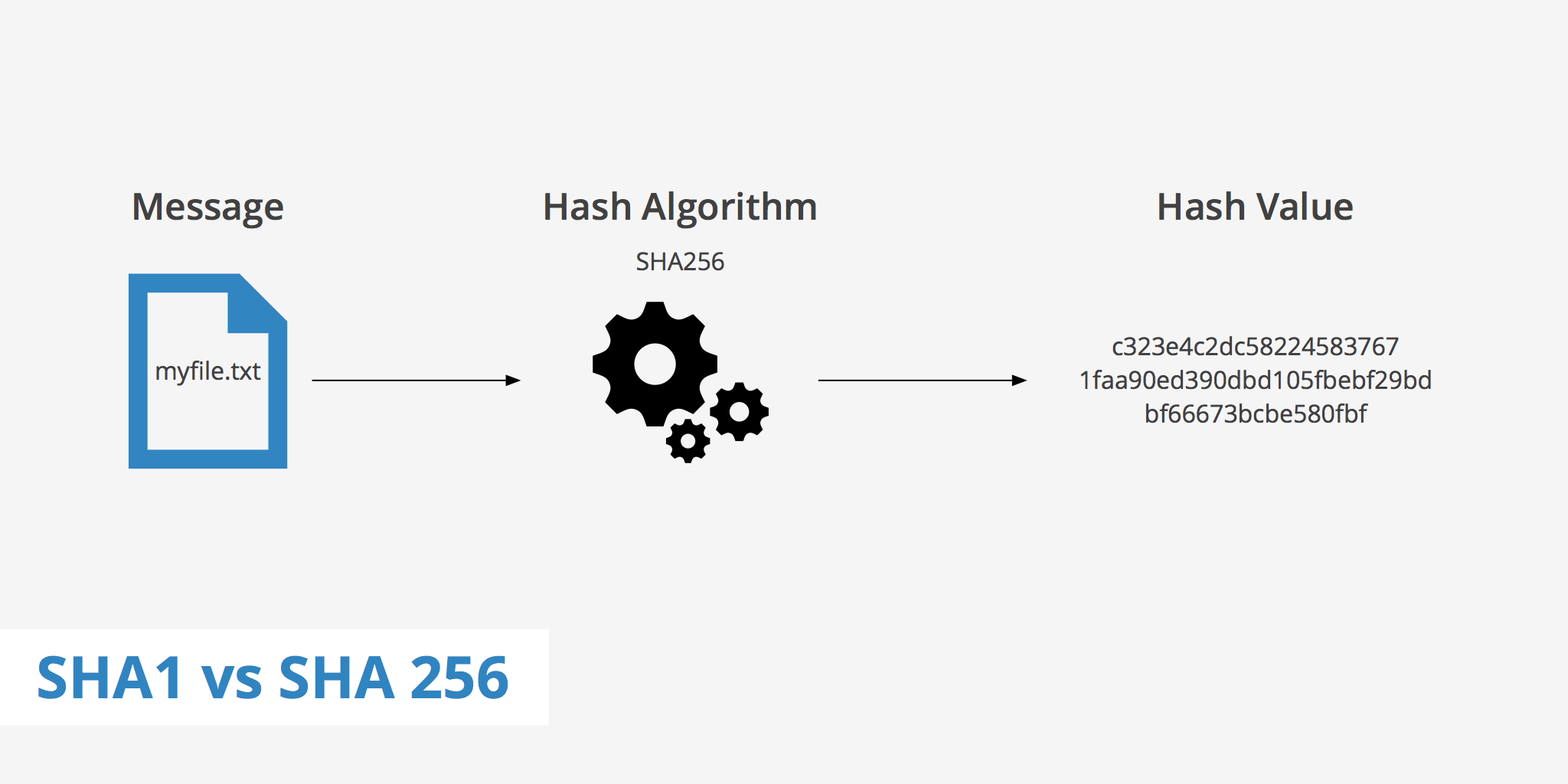
Modern computer security relies heavily on encryption. Data is scrambled while in transit and then unscrambled when it arrives at its legitimate destination using encryption algorithms like AES 256 and PGP. But what if you need to scramble data in a way that’s nearly impossible to decipher? Hashing is used to solve this problem. The purpose of this article is to look at SHA-256, a widely used hash function, and its role in modern cybersecurity.
One of the most popular hash algorithms is SHA-2 (Secure Hash Algorithm 2), which includes SHA-256. We’ll break down each step of the cryptographic algorithm in this article and work through a real-world example by hand. SHA-2 is known for its speed and security (it hasn’t been broken down like SHA-1). When no keys are generated, such as when mining Bitcoin, a fast hash algorithm like SHA-2 often wins out.
What is SHA-256?
The SHA-256 algorithm is a variant of SHA-2 (Secure Hash Algorithm 2), a successor to SHA-1 developed by the National Security Agency in 2001. The SHA-256 hash function is a patented cryptographic hash function that generates a 256-bit value.
What exactly is hashing? Encryption converts data into a secure format that cannot be read unless the recipient has a key. The data can be any size in encrypted form, and it’s often just as long as it is unencrypted. In hashing, on the other hand, data of any size is mapped to data of a specific size. A 512-bit string of data, for example, would be transformed into a 256-bit string using SHA-256 hashing.
Cryptographic hashing modifies hashed data in such a way that it becomes completely unreadable. Converting the 256-bit hash mentioned above back to its original 512-bit form would be nearly impossible. So, why would you want to send an unrecoverable scrambled message? The most common reason is to double-check the content of confidential information. Hashing is used to verify the integrity of secure messages and files, for example. The hash code of a secure file can be made public so that users who download it can verify that they have the correct version without revealing the file’s contents. Hashes are used to verify digital signatures in a similar way.
Cryptographic hashing’s most important application is password verification. Storing users’ passwords in plain text is a disaster waiting to happen; any hacker who gains access to the document will find a treasure trove of unprotected passwords. As a result, storing the hash values of passwords is more secure. The hash value is calculated and compared to the table when a user enters a password. It’s a valid password if it matches one of the saved hashes, and the user can be granted access.
Is SHA-256 a secure algorithm?
One of the most secure hashing functions available is SHA-256. The US government requires its agencies to use SHA-256 to protect certain sensitive data. While the exact details of how SHA-256 works are classified, we do know that it is made up of a Merkle-Damgrd structure derived from a one-way compression function that was made up of the Davies-Meyer structure from a specialized block cipher.
The security of SHA-256 is due to three factors. To begin with, reconstructing the original data from the hash value is nearly impossible. To generate the initial data, a brute-force attack would need to make 2256 attempts.
Second, a collision (two messages with the same hash value) is extremely unlikely. With 2256 possible hash values (more than the number of atoms in the known universe), the chances of two hash values matching are infinitesimally small. Finally, the avalanche effect occurs when a minor change to the original data changes the hash value so much that it’s not obvious the new hash value is derived from similar data.
